This is a continuation of a series of posts on the Nikon D850. You should be able to find all the posts about that camera in the Category List on the right sidebar, below the Articles widget. There’s a drop-down menu there that you can use to get to all the posts in this series; just look for “D850”.
In the last two posts, I tested the Sony 100-400 on the a7RIII at 400 mm. Now I want to do a similar test on the equivalent Nikon lens, the 80-400 VR II on the D850.
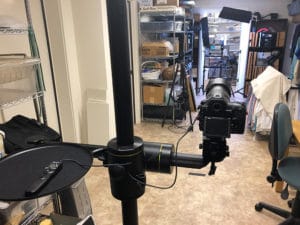
Before we get to the performance of the autofocus systems, let’s test the lens for focus shift.
This is a new way of presenting the data. I’ve made the dots, which indicate the results for each of the ten exposures at each f-stop, smaller. I’ve made lines indicating the average (aka mean or mu) of the sample set bolder and added thin lines above and below the means that are one standard deviation (sigma) away from it. They aren’t too useful here, but when we get to the autofocus graphs, they will give you an idea of the variability of the AF that is more difficult to get from just looking at the dots.
The graph presents displacement of the image projected on the sensor from the desired green-channel focal plane. Negative numbers indicate front-focusing, and there isn’t any to speak of. The image-plane shift is in micrometers (um). The blue focus locations are separated from the red and green ones because of the abundant longitudinal chromatic aberration (LoCA) of the lens. It is clear that there is a lot of focus shift; much more than the Sony 100-400 at 400 mm.
Here are the sizes of the circles of confusion (CoC) implied by the amount of defocusing:
The pixel pitch of the D850 is about 4.3 micrometers (um), so the amount of green channel blurring due to defocus at f/11 is about 4 pixels in diameter. That is a lot. It’s enough that people may conclude that the lens just isn’t very sharp at f/11, and that is not the case; in fact, once you dial the focus shift out, f/11 not much off the sharpness of the best stops. Athe Sony 100-400 is a sharper lens at 400mm at f/5.6 through f/11, and, like the Nikon 80-400 f/11 offers quite usable sharpness, but in the case of the Sony, you can get most of that sharpness with autofocus turned on.
Now let’s look at what things look like with AF-S turned on. Release priority was set to Focus.
There is, as expected, a lot more variation. There is also a bias wide open that we can tune out:
But now that we’ve done that, are we better off anywhere but wide open?
We can get an idea by looking at the CoCs for both cases:
Looks like, on average, we’re better off leaving the AF Adjustment set to 0.
Here’s AF-C, also with the release priority set to focus, which is not how I usually use it. We saw with the a7RIII and the 100-400 that AF-C solved focus shift issues but at the cost of greater variability. What will happen with the D850 and the 80-400?
The spreads for AF-C are somewhat larger than for AF-S with the diaphragm open, but for many, that will be an acceptable tradeoff. The spreads are actually tighter when the aperture is closed down.
PDAF systems provide no signals when the image is in focus, and weak ones when it is nearly so. Therefore, to test them, you need to offset the focus plane from the correct one before each exposure and let the camera do its best to find the right focus. That’s what I did for the above AF curves. Here’s what happens if you start the camera focused on the target, and don’t touch the focusing ring:
Once focused, the camera stays in focus, providing the subject doesn’t move. But that’s not a realistic scenario. If we could focus the camera precisely before using autofocus, we wouldn’t need autofocus in the first place.
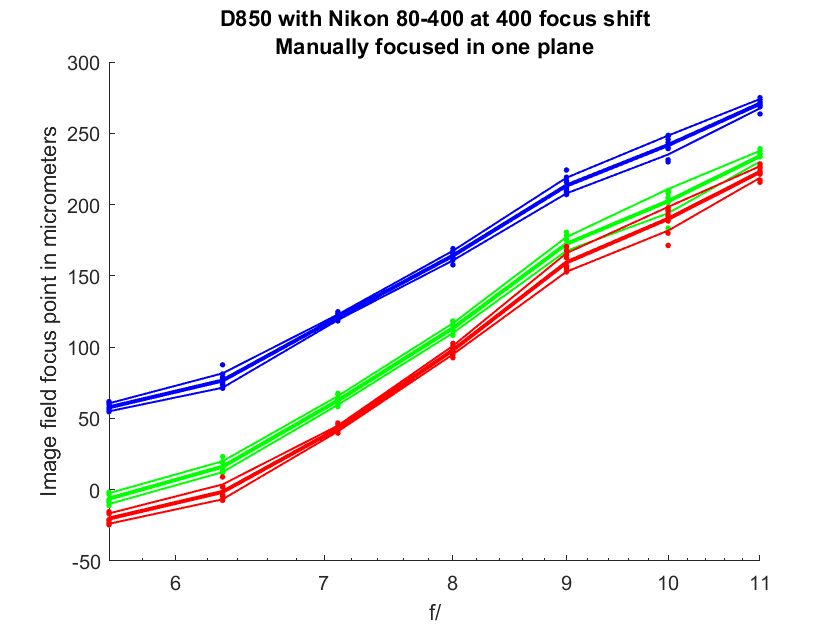
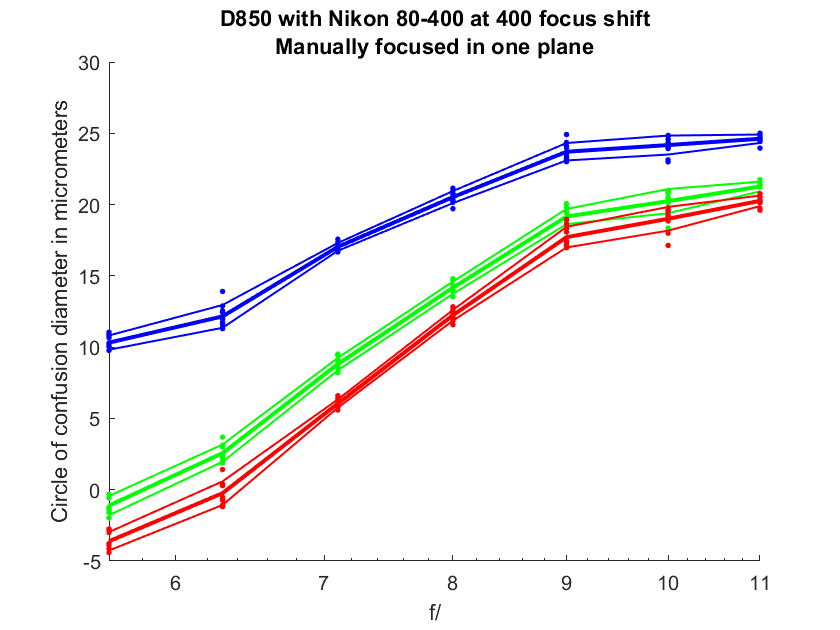
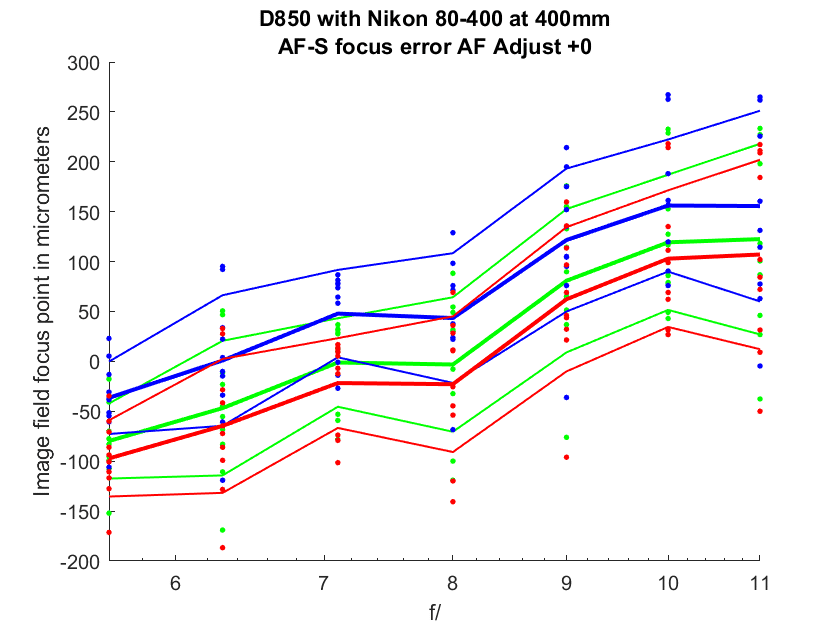

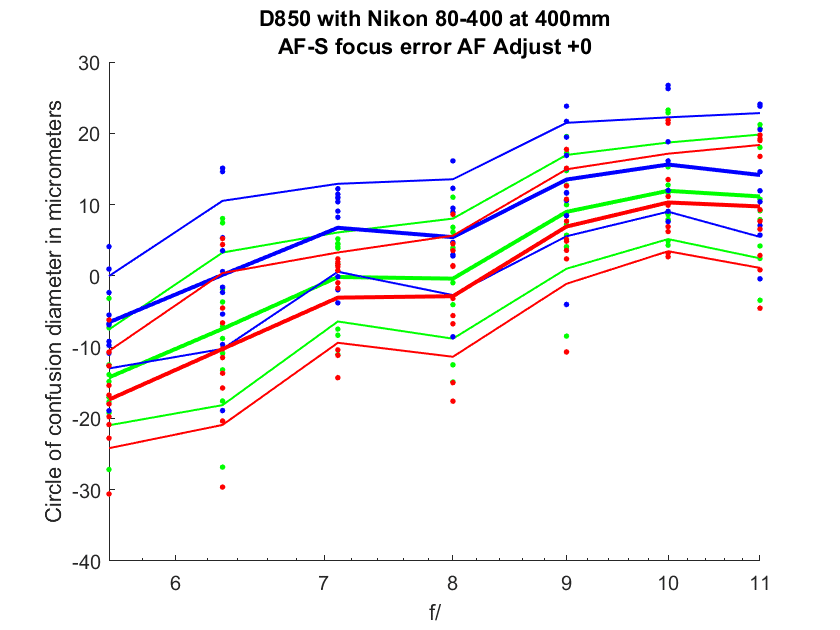
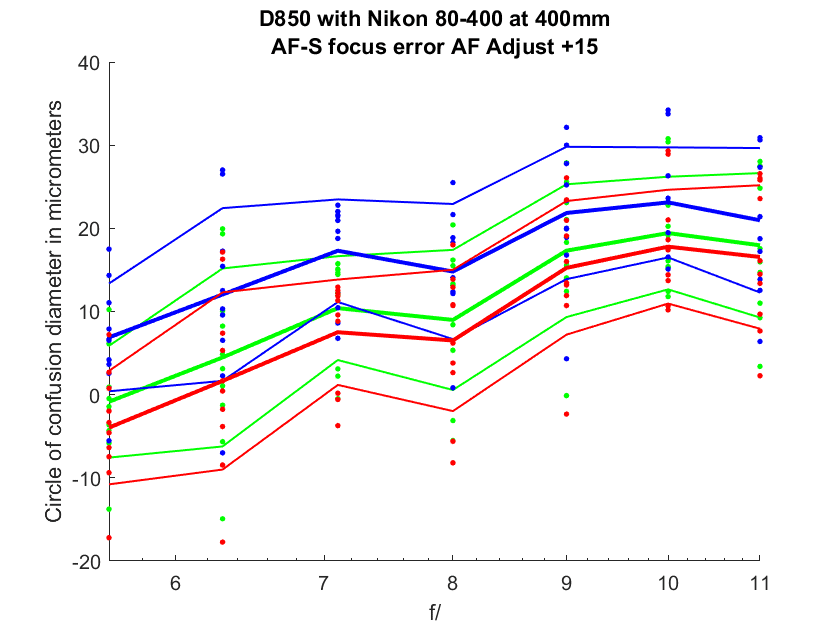
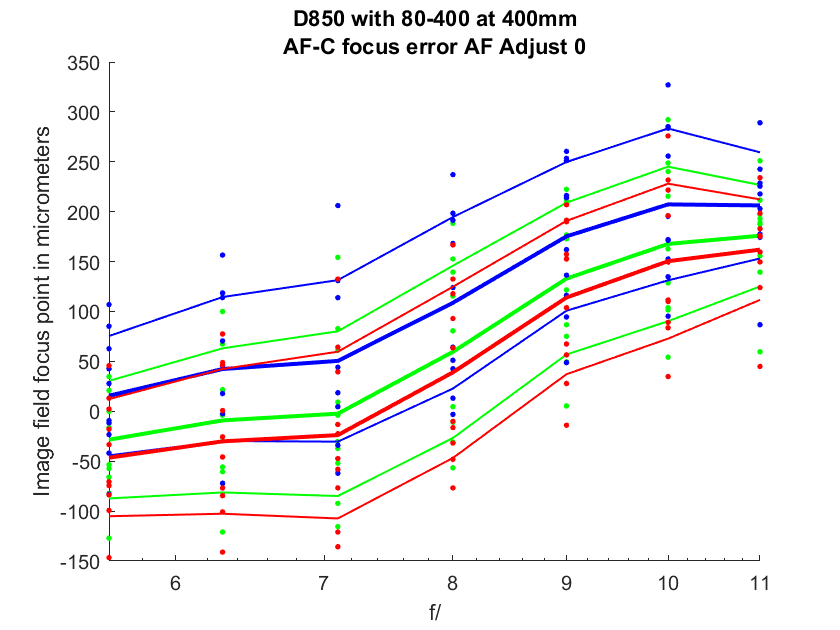
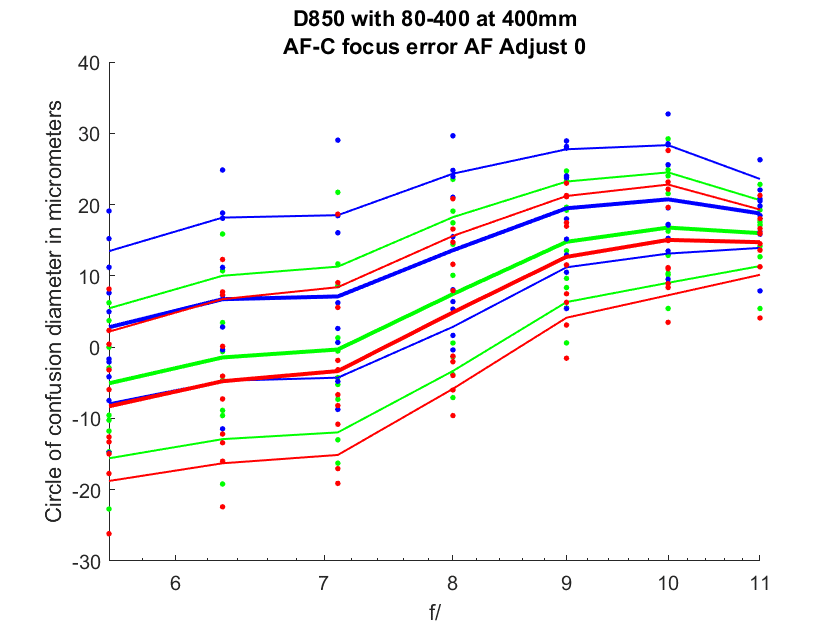
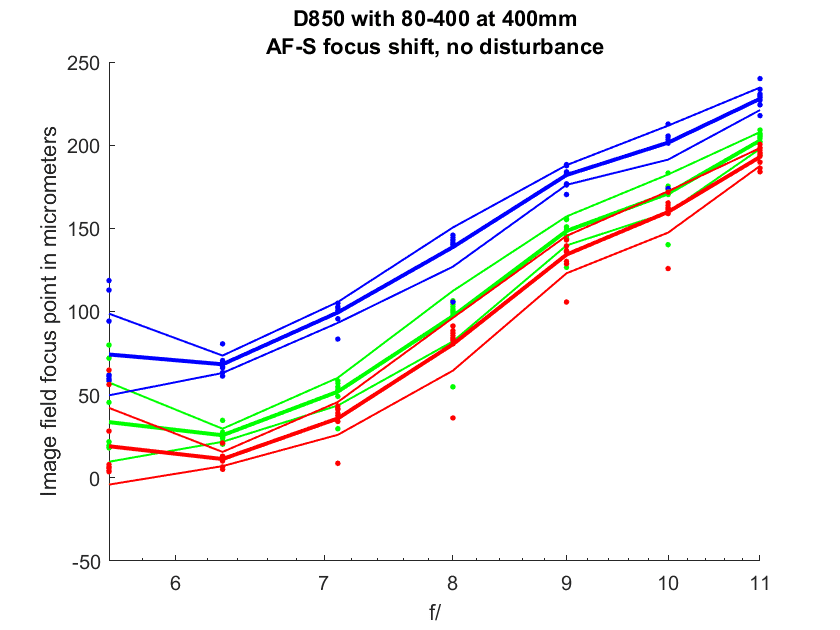
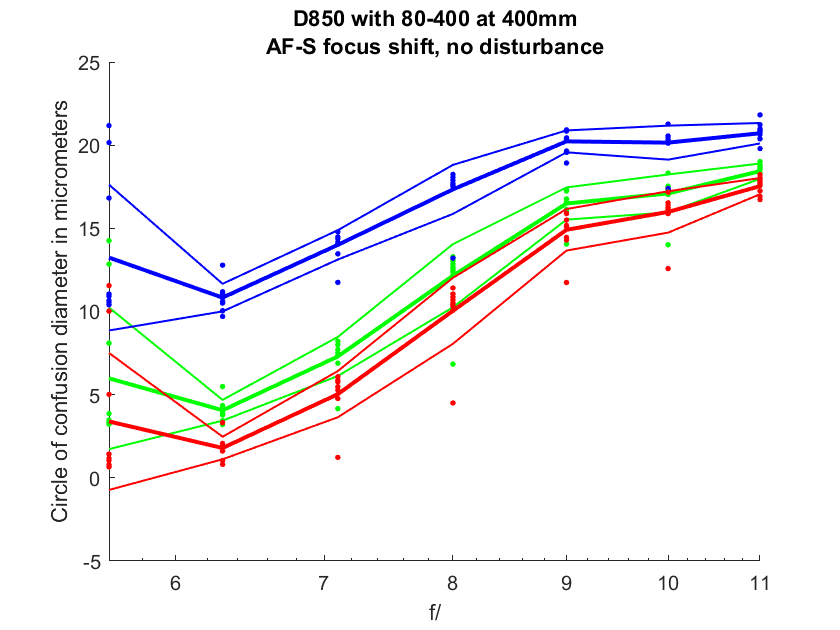
a 4 pixel diameter blur is still worse than nyquist sampled, doesn’t sound that soft to me!
I don’t understand that comment, Brandon. 4 pixels is a bit less than 18 um.
This lens gave me fits. Eventually I had a little table taped on the hood with AFFT settings for several combinations of aperture, focal length, and subject distance. Then I took the table off and sent it to KEH.
Maybe I’m misinterpreting what I’ve seen in this testing or maybe it’s so obvious no one is mentioning it BUT, when appropriate, why wouldn’t it be relatively simple for the manufacturer to automatically factor in a specific compensation adjustment for a lens model at a given aperture IN ADDITION to whatever micro-focus adjustment the user has selected in the camera. Surely some sort of additional LUT would suffice and this would basically compensate for focus shift due to f-stop. Of course, I’m assuming that most lenses of a given model exhibit similar focus shift and that subject distance doesn’t greatly affect this. While more difficult, I suppose even subject distance could be compensated for on the fly. This wouldn’t help with focus spread but it certainly would optimize what basic AF functionality the lens/camera has.
Almost universally, we are seeing ‘NOT-in-the-lens’ vignetting and geometric distortion correction so how about ‘NOT-in-the-lens’ focus shift adjustment. It seems it wouldn’t take much more work than Jim is doing for each lens model. That isn’t asking too much for a company actually making a system camera.
If it did work, it would be a lot more elegant for the user than having a chart taped to the lens shade.